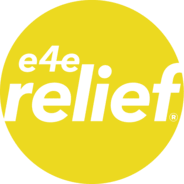The past year brought its fair share of challenges to members of the workforce and the companies they serve. Between natural disasters such as the Maui wildfires and Hurricane Idalia, economic challenges and geopolitical events like the war in Ukraine and the Israel-Hamas conflict, many were left in need of emergency financial support to cover basic life necessities and recover their financial stability.
Several companies have responded to those challenges and instituted charitable programs designed to protect the financial well-being of their workforces. At E4E Relief, we provide one of those solutions: emergency financial relief programs (also called emergency assistance funds or employee relief funds), which allow companies to award cash grants to employees struggling in the wake of disasters and hardships.
It sounds simple: Is there an employee in crisis? Offer them additional money to get them through a challenging time. However, providing emergency financial relief to employees legally and in compliance with the mandates of the Internal Revenue Code (the “Code”) is far from simple. As important as it is to support your workforce when they need it most, it is equally important to do it in a way that complies with applicable law.
The history of emergency financial relief
Our organization, which is the first of its kind, was founded in the days after 9/11, when two leading financial institutions went in search of a way to support the families of those lost that tragic day. The urgent and compassionate request was our initial motivation to explore how E4E Relief could do this work. The Code and related IRS guidance provided the legal underpinning necessary to allow companies to provide charitable cash grants directly to their employees impacted by the 9/11 attacks and other disasters or hardships.
Generally, employers cannot simply give money to an employee. Payments made by an employer to or for the benefit of an employee are taxable as income under Section 61 of the Code and cannot be treated as a nontaxable gift. Even a gift card is considered taxable income. There are, however, exceptions, most notably Section 139 of the Code which was enacted in the aftermath of the 9/11 attacks. When this Section is triggered, it allows employers to provide financial support to employees impacted by a qualified disaster.
Section 139 of the Code stipulates that four circumstances qualify as exemptions to the taxable income rule:
-
In times of presidentially declared disasters. Examples of this include COVID-19, hurricanes, floods or wildfires.
-
When the Secretary of the Treasury declares an event is catastrophic. Examples of this include an economic recession or depression.
-
When a common carrier accident occurs – such as an airplane or train accident.
-
In the wake of a terrorist or military accident – such as the 9/11 attacks.
When any of the above occur, employers can give directly to individuals in need and such charitable payments are tax-qualified – they are not taxable income to the employee and the employer will not be responsible for paying any withholding taxes on the grants. However, to be qualified as exempt charitable payments, and not taxable remuneration, parameters established by the Code and related guidance must be met.
The rules of emergency financial relief
As you might expect, the IRS has established several guidelines for the distribution of emergency financial relief.
First, the employee must have experienced a qualifying event and the employee’s need for financial relief must arise as a result of a sudden and unexpected hardship beyond the employee’s control. There must be an objective review of the application or request for relief. Companies must ensure no one application or individual is prioritized over another. During that review process, certain types of documentation and verification are required, depending on the qualifying event. The standard for documentation is generally lower for certain events, including presidentially declared disasters like COVID-19 or a natural disaster.
Companies are also prohibited from earmarking funds for a specific individual or identifiable group of individuals. Instead, the employer must define a large or indefinite charitable class of individuals who are all equally eligible for charitable grants. There are a few exceptions here. For instance, if a tornado strikes a pharmaceutical plant and a large number of employees are impacted, the company may be permitted to start an emergency financial relief fund specifically to support them. However, the fund must remain in place to serve an indefinite class of individuals in the future, beyond that distinct moment in time.
How emergency financial relief programs operate
Companies who are interested in providing this type of support to their employees have several options relative to how they structure their programs and their charitable relief funds.
First, the company can establish a private foundation. However, there is heightened scrutiny when an employer-sponsored private foundation provides aid that favors the sponsoring employer’s employees. In fact, it was not until after the 9/11 attacks that Congress determined that employer sponsored foundations should be allowed to provide assistance to employees in certain limited situations. Prior to that the IRS deemed disaster relief programs aided employers in recruiting and retaining employees, and thus conferred a significant benefit to the sponsoring company. Thus, employer sponsored private foundations are allowed to provide emergency relief grants to employees of the sponsoring company who are affected by one of the four qualified disasters set forth in Section 139 of the Code but cannot make grants for non-qualified disasters or for emergency hardships. In addition, the IRS requires that the class of beneficiaries be large or indefinite, the recipients of emergency relief grants are selected based on an objective determination of need, the selection is made by a committee or similar independent from the business interests of the employer, and that any benefit to the employer is merely incidental and tenuous.
Companies can also establish an employer sponsored 501(c)(3) public charity. Because public charities receive financial support from the general public, their operations are more transparent and receive greater scrutiny. Therefore, 501(c)(3) public charities are permitted to offer a broader range of emergency relief to employees than can be provided by a private foundation. Employer-sponsored 501(c)(3) public charities are able to provide emergency relief programs to respond to any type of disaster or employee emergency hardship situations, not just those four listed under Section 139. This offers companies a little more leeway in terms of grant issuance but, once again, similar requirements to the private foundation must be met. Like the private foundation, the class of beneficiaries must be large or indefinite, the recipients must be selected based on an objective determination of need, the recipients must be selected by an independent selection committee or similar, and any benefit to the employer must be incidental and tenuous.
E4E Relief provides yet another option, and this is where we have established value in the market. We are an independent 501(c)(3) public charity, meaning we are disconnected from the employer. Employers can hire us to administer their emergency financial relief program and issue grants to members of their designated class. A relief program is established at E4E Relief with a tax-deductible gift from the employer to E4E Relief. Because we are not associated with nor controlled by the sponsoring employer, our review and assessment of recipient need is by definition independent and objective, and because we are an independent 501(c)(3) public charity, it can be more easily demonstrated that any benefit to the sponsoring company, if any, is at best incidental tenuous.
An organization like ours takes many precautions to alleviate risk for the corporate entity and allows the sponsoring company to define the parameters of their program, including who is part of the charitable class and what events or circumstances qualify for financial assistance. Sponsoring companies cannot, however, dictate how a relief fund program is administered or become involved in grant decisioning. We hold that responsibility and, in so doing, ensure objectivity and equitability for our clients and their workforce.
Under any of the above structures, grants are not considered taxable income under the tax code. They are one-time cash payments intended to allow individuals to cover the cost of basic necessities and restore financial stability in the wake of hardship or disaster. However, many companies choose an independent third-party like E4E Relief because it is scalable and streamlines the process. After all, when disaster strikes, timing is everything.
The state of emergency financial relief
E4E Relief has been designing, implementing and administering emergency financial relief programs for more than 20 years now. But our work remained relatively unknown until 2020 and the COVID-19 pandemic, when companies rushed to find ways to support members of their workforce during an unprecedented time. Our programs and services have continued to gain prominence and popularity as companies focus on efforts related to ESG (Environmental Social Governance) and as disasters and hardships continue to plague individuals in the U.S. and around the world. Increasingly, companies realize the value of investing in the mental and financial well-being of their workforce, and E4E Relief is proud to support them in those efforts.
Now, we serve more than 160 companies, including over 50 in the Fortune 500, and we support over 6.5 million individuals in over 120 countries with over 350,000 applications received, $359 million in contributions and $259 million awarded since 2020. It is a prime example of light coming from darkness.


